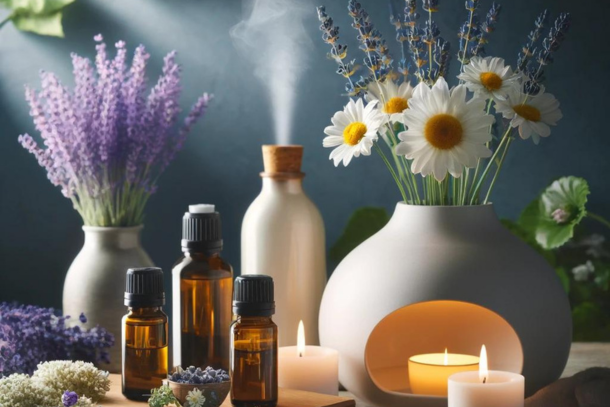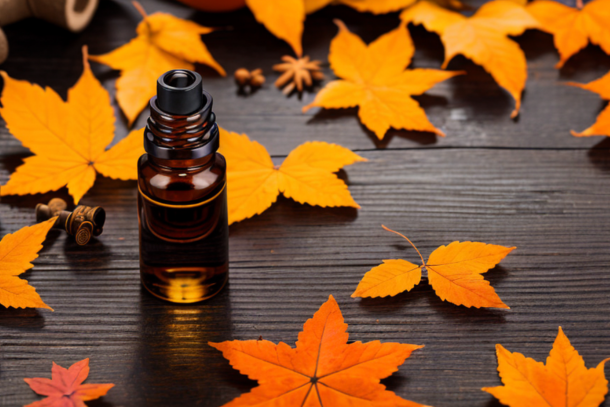The Incredible Health Benefits of Henna: Ayurvedic Uses, History, and More

Before delving into the myriad health benefits and uses of henna in traditional Ayurvedic medicine, it's important to understand the extensive history and the significant role henna has played in healing and self-care practices.
The Wondrous World of Henna in Ayurvedic Medicine
Henna, known as Mehendi in Hindi and Lawsonia inermis in scientific terms, is not just a plant, it's an age-old tradition ingrained in many cultures around the world. Its vivid reddish-orange dye is famed for body art, but beyond its aesthetics, henna holds a special place in Ayurvedic medicine, the ancient Indian system of natural healing.
The Relevance of Henna in Ayurvedic Practices
Henna's myriad applications have made it a stalwart in Ayurveda for centuries. Owing to its cooling properties, henna is known to pacify Pitta, one of the three life energies or doshas according to Ayurveda. Thus, it is highly regarded for its therapeutic potential and is incorporated in many wellness practices.
The Health Powerhouse: Henna's Potential Benefits
The therapeutic potential of henna is vast. From being a natural anti-inflammatory agent to improving circulation, from promoting healthy hair growth to providing relief from various skin conditions, henna is believed to be a holistic solution to many health concerns. The complexity and versatility of this plant make it a cornerstone in Ayurvedic medicine.
In this article, we'll delve deeper into these health benefits and explore how you can incorporate henna into your health and wellness routine. So, let's embark on this journey of rediscovering henna and its outstanding healing powers.
A Brief History of Henna in Ayurveda
Tracing the roots of Henna takes us back to the earliest epochs of Ayurvedic medicine. This natural herb, known scientifically as Lawsonia inermis, has been a cornerstone of Ayurvedic practices for millennia. The leaves of the Henna plant were traditionally ground into a fine paste and applied for its potent medicinal properties.
The Long-standing History of Henna in Ayurveda
In India, the cradle of Ayurveda, Henna has been an integral part of cultural and healing practices since ancient times. Excavations of pottery from the Indus Valley civilization reveal the use of Henna as a medicinal herb dating back to around 3300 BC. Its rich, dark-red dye was considered purifying and was utilised in ceremonial rituals and festivities, whilst its cooling properties were employed as a balm for heat-related conditions.
Different Uses of Henna in Ancient Ayurvedic Practices
The application of Henna was not limited to mere adornment; it was often used to treat an array of health concerns. From healing wounds and soothing burns to reducing fever and detoxifying the body, the benefits of Henna were profoundly recognised in ancient Ayurvedic texts. Henna was also used to cool the body, aid sleep, and even as a preventative measure against hair loss.
The Transition and Adaptation of Henna in Modern Medical Practices
Fast forward to the 21st century, and Henna still holds a firm place in Ayurvedic and holistic medicine. Modern scientific research is gradually catching up with what Ayurvedic practitioners have known for centuries. Henna's anti-inflammatory, antimicrobial, and analgesic properties are increasingly being validated by science, affirming its role in modern medical practices. Today, it is common to see Henna incorporated into natural hair and skin care products, showcasing how age-old wisdom is being adapted to our contemporary needs.
Understanding the Benefits of Henna
Reducing Inflammation
Henna, a common ingredient in Ayurvedic medicine, is renowned for its impressive anti-inflammatory properties. The active compounds found within Henna, such as lawsone and mannitol, work together to reduce inflammation by moderating the body's immune response. This makes it a natural and effective remedy for conditions such as arthritis, headaches, and skin inflammations.
Historically, Henna has been used in various forms to combat inflammation. For instance, a Henna paste can be applied topically to inflamed areas to provide soothing relief. Additionally, the leaves are often brewed into a tea, providing a systemic anti-inflammatory effect.
A growing body of scientific literature supports the anti-inflammatory properties of Henna. Several studies have reported significant reductions in inflammation markers in both animal and human models following the application of Henna extracts.
Improving Circulation
Henna isn't just a pretty dye; it's also believed to improve circulation. The active compounds in Henna stimulate blood flow, particularly when applied topically, which can help nourish cells and speed up the healing process.
Traditional Ayurvedic practices recommend applying a Henna paste to areas with poor circulation. This can invigorate the localised blood flow, delivering vital nutrients to the area and aiding recovery. This method is frequently used to stimulate blood flow in the feet and hands.
Scientific studies have increasingly supported the traditional claims about Henna's role in improving circulation. While the majority of research has been preclinical, results show promising signs of increased blood flow and reduced blood clotting potential after Henna application.
Promoting Hair Growth
Henna has long been celebrated for its hair-enhancing abilities. The nutrient-rich composition of Henna nourishes the scalp, strengthens the hair follicles and stimulates hair growth.
In traditional Ayurvedic hair care, Henna is used as a natural conditioner and dye. A Henna paste is commonly applied to the hair and scalp, not only to impart a vibrant colour but also to enrich the hair with vital nutrients that encourage growth.
Scientific research provides considerable support for these claims, with multiple studies showing an increased rate of hair growth following regular Henna treatment. While further research is needed to fully understand the mechanisms involved, Henna is undoubtedly a potent ally in the pursuit of healthy, lustrous hair.
In conclusion, the benefits of Henna extend far beyond its cosmetic use. From reducing inflammation and improving circulation to promoting hair growth, this traditional Ayurvedic plant holds a vast potential for natural health and wellbeing.
Henna: An Exceptional Natural Remedy for Skin Conditions
Henna has long been hailed in Ayurvedic medicine as a therapeutic agent for a myriad of skin conditions. It possesses unique properties that can help alleviate pain and soothe itching, thus contributing to overall skin health.
Henna's Role in Pain and Itch Relief
An essential attribute of Henna is its calming effect on skin issues. It contains natural compounds that provide relief from pain and itching, often associated with conditions like eczema, psoriasis, and various forms of dermatitis. The topical application of Henna creates a cooling effect, easing discomfort and promoting skin healing.
Beneficial for a Variety of Skin Conditions
The efficacy of Henna extends to several skin problems. It's not just a decorative tool used in cultural celebrations, but also a potent treatment for sunburn, fungal infections, and wounds. Its antimicrobial properties make it an effective remedy against acne, while its anti-inflammatory effects help to reduce skin redness and swelling.
Tips for Using Henna for Skin Conditions
To gain optimal benefits from Henna, it is often mixed with other natural ingredients like lemon juice, tea, or essential oils. The mixture is applied topically to the affected area and left to dry, usually for a few hours, before rinsing. It's important to note that the effects are not immediate, and consistent application over a period of time is necessary for noticeable results.
Precautions When Using Henna for Skin Conditions
While Henna is generally safe to use, a patch test is recommended before full application to avoid potential allergic reactions. It should be used in moderation as excessive use can potentially lead to skin dryness. Remember to consult with a healthcare professional or a skilled Ayurvedic practitioner before starting any new treatment regimen.
Henna, when used correctly and responsibly, can be a splendid addition to your skincare routine, providing relief from various skin conditions with its natural therapeutic properties.
Harnessing Henna’s Benefits: Practical Tips
Embracing the profound benefits of Henna in your everyday routine can remarkably improve your overall health. However, it's crucial to understand the right methods and precautions when using Henna to avoid any potential adverse effects.
How to Incorporate Henna into Daily Routine
Henna can be seamlessly incorporated into your daily life. From soothing skin conditions to enhancing hair health, this versatile Ayurvedic remedy can be used in various forms. To soothe inflamed skin, a paste of Henna can be prepared and applied directly to the affected area. Leave it on for around 15-20 minutes before washing it off with lukewarm water.
For hair health, Henna hair masks can be used once every fortnight. A typical mask includes Henna powder, eggs, and lemon juice. Leave the mixture on your hair for about an hour before rinsing it out.
Recommended Quantities and Frequencies
The quantity and frequency of Henna use can differ depending on the purpose. As a general rule, Henna paste for skin conditions should be used in moderation to avoid potential skin dryness. A small, coin-sized amount should suffice for each application.
When it comes to hair care, a larger quantity may be required depending on the length and thickness of your hair. A 100-200g of Henna powder is typically enough for shoulder-length hair.
Potential Side Effects and Precautions
While Henna boasts a host of health benefits, one must remain mindful of its potential side effects. People with sensitive skin might experience dryness or itching. It's always recommended to conduct a patch test before applying Henna to a larger skin area. Remember, if you're pregnant, breastfeeding, or have a pre-existing health condition, it's advisable to consult with a healthcare professional before using Henna.
Drawing Henna to a Close
As we draw this informative journey to a close, let's take a moment to summarise the salient points gleaned from our exploration of Henna's profound relevance in traditional Ayurvedic medicine.
Henna's Multifaceted Benefits
This versatile plant, steeped in history, is more than a mere cosmetic substance. It offers a range of health benefits that have stood the test of time, from reducing inflammation and improving circulation to promoting hair growth. Science is only beginning to unravel the mechanisms behind these benefits, serving to reinforce the wisdom of our ancestors who recognised Henna's therapeutic properties centuries ago.
Henna as a Skin Soother
Beyond these health benefits, Henna also distinguishes itself as a natural remedy for a variety of skin conditions. Its inherent ability to relieve pain and itching proves invaluable, further broadening its repertoire of uses.
An Ancient Remedy in Modern Times
In our contemporary world, where we're increasingly seeking natural, holistic alternatives, Henna's relevance has not diminished. On the contrary, its varied applications and tangible benefits underscore its importance in the realm of natural remedies and Ayurvedic practices.
Final Thoughts
We should not dismiss Henna as merely a cultural or aesthetic accessory. Its vast potential health benefits, rooted deeply in the time-honoured science of Ayurveda, invite us to explore this natural marvel more deeply. The wisdom of traditional Ayurvedic medicine, when combined with modern scientific research, creates a compelling narrative for the continued study and use of Henna in health and wellbeing.
The story of Henna reminds us that nature, often overlooked in the modern medical discourse, still holds a cornucopia of untapped resources. It is our responsibility to explore and harness these gifts wisely.
Inviting You to Embrace Henna
Having taken you on a journey through the fascinating history of Henna and its myriad health benefits in Ayurvedic medicine, we're now inviting you to personally experience this ancient, healing plant.
Step Into the World of Henna
Try incorporating Henna into your regular health routine. Perhaps you're drawn to the idea of Henna for boosting hair growth or maybe its anti-inflammatory properties resonate with you. It might be that you're keen to explore Henna as a remedy for skin irritations. Whatever your interest may be, give it a go. Remember, it's always wise to consult with a healthcare professional prior to beginning any new treatment.
Simple Ways to Incorporate Henna
There are many ways you can bring Henna into your life. From creating a topical paste for skin or hair to consuming it in various forms for internal health benefits. Do some research, find recipes and guides, and always use high-quality, pure Henna products for the best results.
Share Your Henna Journey
We're a community that thrives on shared experiences and insights. Whether you're a seasoned Henna user or new to this wonderful plant, we'd love to hear from you. Tell us how you've incorporated Henna into your daily routine, the benefits you've experienced, or any tips you may have for others. Share your thoughts with us on our social media platforms.
Embrace Henna, delve into the treasure trove of Ayurvedic wisdom, and let's continue to learn, grow and benefit together on this journey towards natural health and wellness.
Related to this article are the following:
- 10 Natural Remedies to Combat Summer Allergies
- Harnessing the Power of Henna in Spa Treatments: A Comprehensive Guide
- The Calming Influence of Henna Scent: A Natural Route to Relaxation and Stress Reduction
- The Art of Mindfulness: Unleashing Joy and Relaxation with Henna Art
- Natural Remedies for Headaches, Upset Stomach and Strep Throat
I do hope you have enjoyed this article and hope that you will subscribe to my newsletter so you can get the latest information about all things naturally relaxing.
Stay in touch, join the Naturally Relaxing Newsletter
Newsletter Signup
Post Your Comments
or post as a guest
Be the first to comment.
Latest articles in Relaxation

Capturing the Perfect Sunset: Tips and Techniques

The Benefits of Aromatherapy: Essential Oils for Relaxation

Embracing Calm: Innovative Ways to Relax in the New Year

Autumn Aromatherapy: Essential Oils for Relaxation

Embracing Autumn's Tranquillity: Finding Peace in the UK's Golden Season






